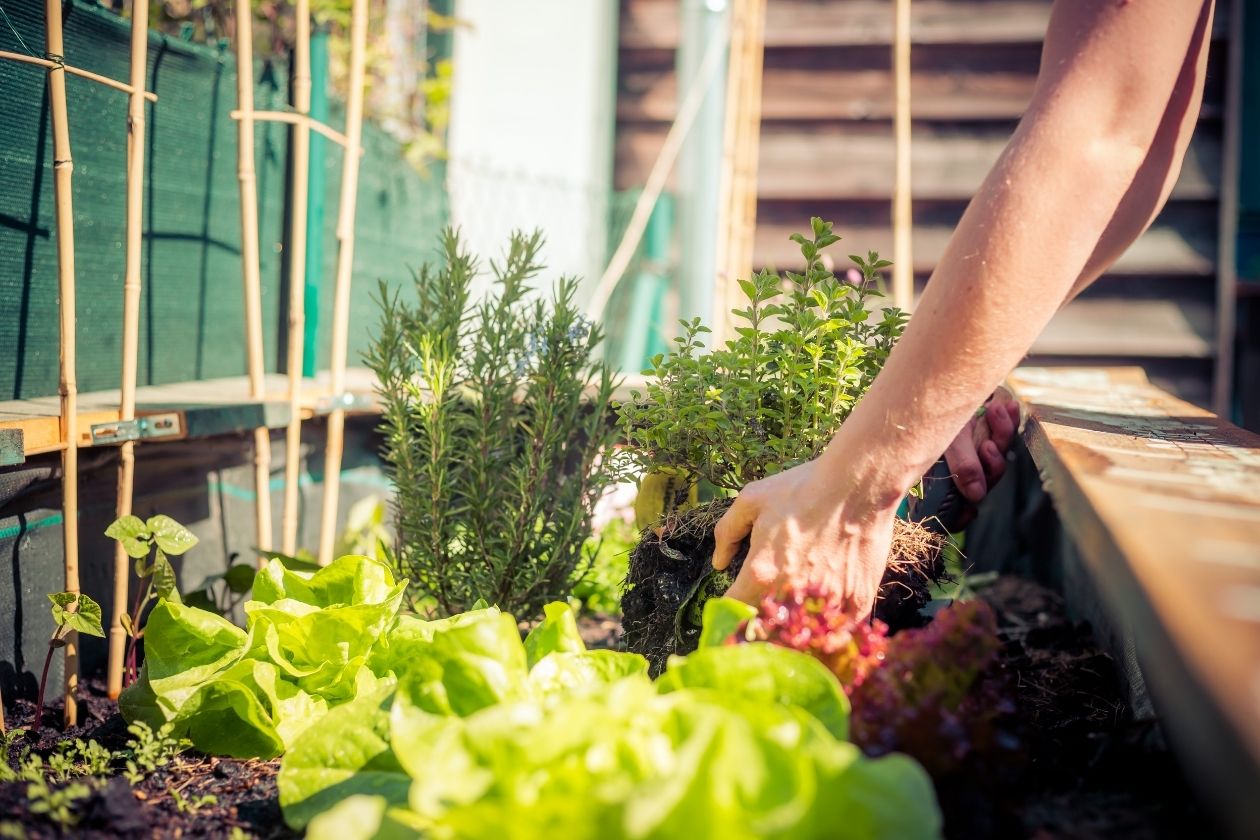No matter what method you use, utilizing the synergies between different crops and flowers can take your garden to the next level. Companion planting is an old technique that pairs different crops together with similarities and differences that help both plants out—they may grow in similar conditions but use different nutrients or keep a certain type of pest away. If you’ve started caring for a vegetable garden, keep the most common companion plants for vegetables in mind to holistically improve the lives of your plants.
Table of Contents
Companion Plants for All Vegetables
Some herbs and flowers provide benefits to all kinds of vegetables, whether in a hydroponic garden or in soil. If you’re not sure which companion plant you need for your crops, consider picking from the following list for a broad answer:
- Basil
- Young dill
- Marigold
- Mint
- Zinnias
- Sage
- Nasturtiums
As a note, gardeners typically plant dill near tomatoes to deter hornworms—however, once the dill matures, it starts to harm the tomato plant. Remove dill from the tomatoes as soon as it matures.
The Three Sisters
One of the first known companion plants comes from the wisdom of the Iroquois Native American tribe. Corn, beans, and squash work together to keep each other healthy, strong, and free of pests and predators. Corn stalks grow tall, allowing the beans to wrap around them, and the squash keeps the earth below moist and free of weeds. The beans also bring nitrogen from the air into the soil, which satisfies both the corn and squash.
With three very different flavor profiles, these vegetables provided a hearty meal. Because of their biodiversity, the crops didn’t require rotation and would actually add nutrients to the soil below. The Iroquois considered these three crops to be a gift from the gods, and it’s easy to see why.
Basil and Tomatoes, Basil and Lettuce
When considering how companion planting works in any growing medium, it’s difficult to think that a simple herb can increase yield or amplify the flavor of another crop. Basil, however, is an outstanding companion plant to both tomatoes and lettuce for these very reasons.
If you grow basil one foot away from your tomatoes, it will increase the number of tomatoes that you grow. Grow it near lettuce, and your basil will add flavor to it. Since basil is one of the most common companion plants for vegetables, try growing it near any of your vegetables to watch how it affects them!




